Locate Your Meter
The locations of electric meters can vary, some for convenience and others for necessity. Commercial meters may be located inside buildings or outside. Residential meters are generally located outside the house or apartment, rear, right or left sides, or front. On some older electric services, the meters are located inside service porches. Some apartment buildings or complexes may have electric meter rooms where the customer’s meter is locked inside. Electric meters can also be located by following the electric service wires (service drop) from the utility pole to the house or apartment.
You can find your electric meter by locating the service wires; overhead services will start from power poles and have a service drop, to a service entrance, to a power panel. Underground services can have a service entrance that will be undetectable until you find the power panel.
In order to not confuse your electric service with other utility wires; i.e. cable TV or telephone, the electric wires are connected at the top wires of the utility pole. Your cable TV and telephone wires are connected to the bottom wires of a utility pole. If you live in an area where there are no utility poles, your utilities are underground. Your electric service is located on the outside of the house. The wires are fed through a conduit from the ground up to the electric service panel where the meter is located.
Note: Photographs of meters taken by commercial customers will not be accepted for meter-reading purposes. To request a reading of your meter, call 800-DIAL-DWP.
Types of Electric Meters
The types of electric meters can vary for commercial and residential customers.
Commercial meters can be digital or mechanical, and have the widest range of metering possibilities, due to the different requirements for service. They will include straight kilowatt hour meters (kWh), kilowatt (kW) demand meters, time of use demand meters, and kilovolt amps reactive hours (kVvarh) time of use meters. Verify the meter number (Prefix Size and ID# ie. “F9-1234565”) to determine if you are reading the correct meter. The “Constant” is multiplier that multiplies the metered consumption to reflect actual consumption and is only indicated on the meter if it is greater than “1”.
There are two basic types of residential electric meters -- the electronic meter and the analog electric meter. Electronic meters display identifiers and meter readings in the digital display or Liquid Crystal Display (LCD) as programmed. Analog electric meters have four to five separate dials that equates to a read. Some electronic meters also may have a set of mechanical dials, which correspond to the digital total kilowatt hour (kWh) reading.
Mechanical Electric Meter (Analog)
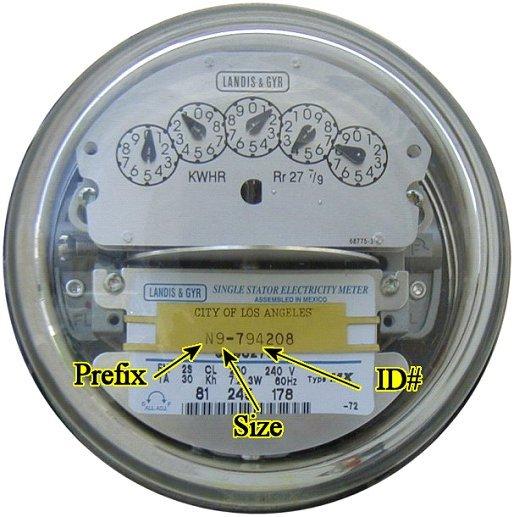
-
Verify the meter number (Prefix Size and ID# ie. “F9-1234565”) to determine if you are reading the correct meter.
-
Look at the dials at the top of the meter and read all the dials from right to left. The directional arrow above each dial indicates the direction the dial is moving. (the rotation of the pointer alternates between dials)
-
The read is the number that the pointer is directly on or has passed. If the pointer is in between two numbers drop back to the lower number.
-
Referring to the four dial example above, the dial farthest to the right's rotation is clockwise and the pointer has just passed 5, so the read of that dial is "5." Moving to the next dial to the left, the dial rotates counterclockwise and the pointer is between 7 and 8 so drop to the lower number and the reading is "7."
- Continue reading the dials from right to left so the recorded reading is "8975." If relaying the reading verbally, indicate the direction of the read “right to left” or “left to right.”
Demand Meter Scale (Analog)
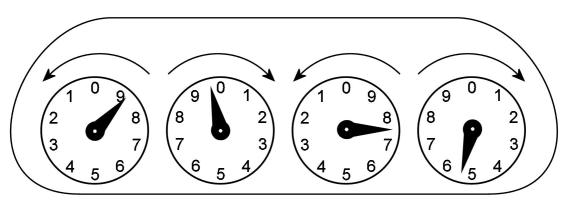
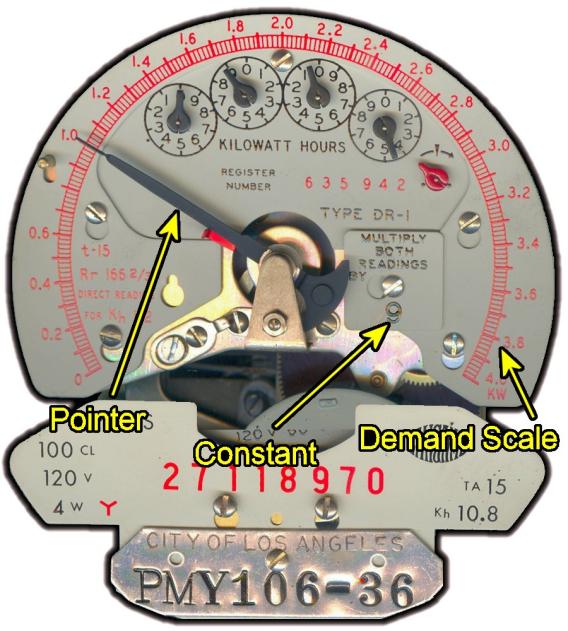
The pointer indicates the electrical demand. Using the numerical scale for this pointer, read the number immediately to the left of the pointer. Then, estimate the additional fraction between the number and the pointer. This example shows a reading of “1.00”. The Kwh dial reading for this meter is “9904”. To calculate the demand in Kw and Kwh, multiply the readings “1.00” Kw and the difference in Kwh of the prior reading by the meter constant K = 9.
Digital Electric Meter
Electronic meters display identifiers and meter readings in the digital display or Liquid Crystal Display (LCD) as programmed. Some electronic meters also may have a set of mechanical dials, which correspond to the digital total Kilowatt hour (Kwh) reading.
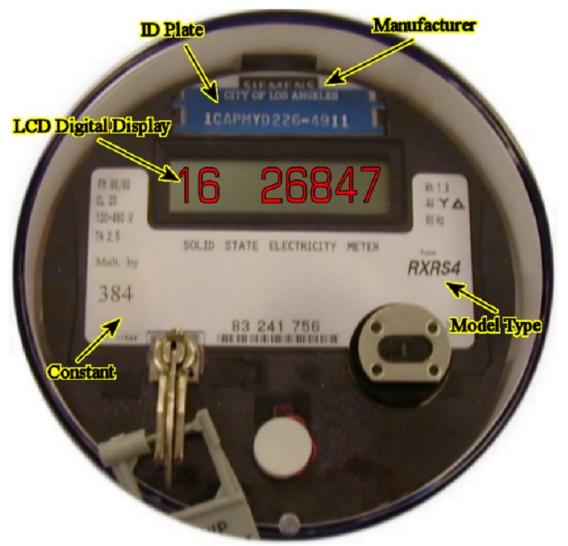
-
To read your digital electric meter correctly, watch the display. The “Time of Use” Digital display will cycle through various displays, ending with “888888” to indicate the start of a new cycle.
- Start recording necessary displays as they flash. The read for identifier “16” for the meter on the right above is, “26847”.
Note: Digital meters without “Time of Use” programming will not display identifiers and the digital read will be the Kwh total, although not indicated on the display. The Kwh read for the meter on the left is “64521”.
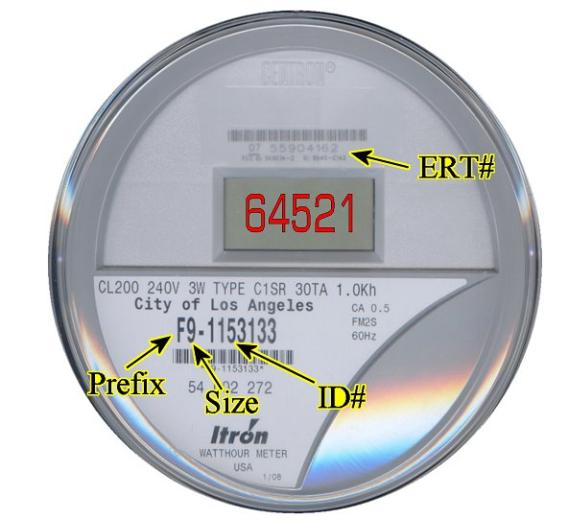
There are various displays for different types of readings such as: Kwh, Maximum Demand, Time of Use, and Kvarh. These digital meters can be programmed to record any combination of readings as necessary. Click on the document below to view list displays.
On this page
Watch our How to Read Your Electric Meter Video